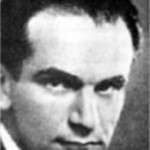By Brian Taylor Goldstein, Esq.
First and foremost: our thoughts and prayers go out to everyone recovering from and impacted by Hurricane Sandy. From property destruction to physical injuries and deaths, it has caused immeasurable damage. For those of us in the arts industry, its also caused cancellations and logistical nightmares, but performances can always be rescheduled. Now is the time for us to work together and remember what’s important.
Dear Law and Disorder:
I am writing because I am filing a visa application for a German orchestra conductor. He has been approved for an O-1 visa for a period of two years. He has multiple engagements and will need to come in and out of the U.S. during this time. I am hoping to apply for a multiple entry visa for him, however I cannot see an option to select the times he wants to come to U.S. on the visa application. Was this something I was supposed to request on the visa petition? What do I do?
Good news! There is nothing for you to do. Except with regard to a small list of specific countries, all US visas, once issued, are automatically multiple-entry!
If you visit the website of the United States State Department at http://travel.state.gov/visa/fees/fees_3272.html you will find the State Department “reciprocity” list. This contains the rules that govern the validity period of visas, the number of permissible entries, and fees charged for them. Its called a “reciprocity” list because the U.S. charges citizens of other countries whatever fees their countries charge U.S. citizens for similar types of visas and, reciprocally, limits the citizens of certain countries to visas as short as three months, and to visas valid for single entries only. In other words, the United States basically treats the citizens of other countries either as good or as bad as they treat citizens of the United States…diplomacy at its best!
For example, Chinese citizens are only eligible for single entry visas and their visas are only valid for three months at a time. So, even if USCIS approves a Chinese musician for an O-1 visa with a classification period of three years, pursuant to the “reciprocity” list, the consult will only grant the Chinese musician a visa valid for three months and a single entry. This means that, once the visa is issued, the Chinese musician has three months to enter the U.S. Once she enters the U.S., she can remain and work in the U.S. for the full three years of her approved O-1 classification. However, if she leaves at any time, she will need to return to the consulate and obtain a new visa before she can return. (NOTE: She will not need a new approval from USCIS. She merely needs to apply for a new visa at the consulate using her original I-797 approval notice.) Similarly, a Brazilian artist approved for a three year O-1 will be issued a multiple entry visa, but only valid for three months. During the three year period, they can enter and leave as often as they wish, but only for three months. After that, they must obtain a new visa.
In your case, there are no restrictions on German citizens. So, pursuant to the reciprocity list, if your conductor has been approved for a 2-year O-1, the consulate will automatically issue him a multiple entry O-1 visa valid for 2 years, during which time he can enter and leave the U.S. as many times as he likes during that period. There is no box or option to check because you are done.
________________________________________________________________
For additional information and resources on this and other  legal and business issues for the performing arts, visit ggartslaw.com
legal and business issues for the performing arts, visit ggartslaw.com
To ask your own question, write to lawanddisorder@musicalamerica.org.
All questions on any topic related to legal and business issues will be welcome. However, please post only general questions or hypotheticals. GG Arts Law reserves the right to alter, edit or, amend questions to focus on specific issues or to avoid names, circumstances, or any information that could be used to identify or embarrass a specific individual or organization. All questions will be posted anonymously.
__________________________________________________________________
THE OFFICIAL DISCLAIMER:
THIS IS NOT LEGAL ADVICE!
The purpose of this blog is to provide general advice and guidance, not legal advice. Please consult with an attorney familiar with your specific circumstances, facts, challenges, medications, psychiatric disorders, past-lives, karmic debt, and anything else that may impact your situation before drawing any conclusions, deciding upon a course of action, sending a nasty email, filing a lawsuit, or doing anything rash!


Fall for Dance Festival: Recapping Program 1, 2 and 5
Wednesday, October 17th, 2012By Rachel Straus
The seventh annual Fall For Dance Festival came to a meaty close on October 13. Program five at New York’s City Center trafficked in high testosterone, thanks to China’s LPD-Laboratory Dance Project’s No Comment (2002) and Yaron Lifschitz’s Circa (2009), which is also the name of the Australian acrobatic troupe. In both works the body was treated like a battering ram.
Circa by Justin Nicholas Atmosphere Photography
In Circa, the performers used not only their fellow artists’ thighs and shoulders, but also their faces, as launching pads for balancing in midair and jettisoning across the space like Evel Knievel. In No Comment, the men continually fell to the floor, as though blown down by an invisible hammer. As a finale, they stripped to their waists to reveal their glistening muscular torsos. Like fight club winners, they took their bows. But their message—sex objects who pulverize themselves are cool—confounded me.
Visions of aggression and angst trumped visions of cooperation and kindliness in the three FFD programs of 12 dances from 12 international and national-based companies seen on September 28 and 30, and October 13. Perhaps the programming, spearheaded by artistic advisor Stanford Makishi, not only represented his personal preferences, but also reflected the times. The majority of the works were made in the past four years, and only two dated before 2002. This decade hasn’t been an easy ride; the dances reflects that.
The festival’s first program ended with Martha Graham’s Chronicle, which was made in response to rising European fascism before World War II. The first section of Graham’s 1936 work surprisingly echoed the last work in the festival: Deseo Y Conciencia (2011). In Deseo, flamenco choreographer-performer Maria Pagés donned a red costume that transformed into a shroud. Likewise, the gargantuan red underskirt worn by Blakeley White-Mcguire in Chronicle possessed the same import. Both women became symbols of mourning, evoking through their blood-red cloaks a fraught world.
Maria Pages. Photo by David Ruano
Blakeley White-McGuire. Photo by Michele Ballantini
The two most ambitious works, of the 12 viewed, were Pam Tamowitz’s Fortune (2011) and Christopher Wheeldon’s Five Movements, Three Repeats (2012). Both tendered subtlety, nuance and mystery. (Full disclosure: Fortune was choreographed on the Juilliard School dancers and I work at Juilliard.) In Fortune, Tamowitz set 21 dancers, costumed in hot pink and red unitards, against a field of greenish yellow. Here was a happy Mark Rothko painting. Though Tamowitz’s movement vocabulary is clearly inspired by Merce Cunningham’s, she doesn’t ignore the music as was Cunningham’s way. Tamowitz’s sharply sculptural patterning, full of pregnant pauses, reflected Charles Wuorinen’s stop and go Fortune (performed by a quartet Juilliard School musicians). In response to Wuorinen’s abrupt shifts in sounds, which instantly dissolve as though they never happened, Tamowitz evokes mini narratives, some absurd, others resonant of a city life, where pedestrians walk with laser-eye certainty.
Juilliard Dancers in "Fortune." Photo by Rosalie O'Connor
Also of note was Christopher Wheeldon’s Five Movements, Three Repeats, which was made for Fangi-Yi Sheu & Artists. Sheu, a former Graham dancer born and trained in Taiwan, is now based in New York. She is one of the great performers of our time. Her guests were none other than Wheeldon’s former colleagues at New York City Ballet: Tyler Angle, Craig Hall and Wendy Whelan. To a recording of Max Richter’sMEMORYHOUSE and Otis Clyde’s The Bitter Earth/On the Nature of Daylight, Wheeldon didn’t treat Sheu as some modern dance oddity among the City Ballet dancers.
At the beginning of every other section of Five Movements, Three Repeats, Sheu undulated her spine like a fern seeking light. Her pliable torso work was best picked up in Hall’s simultanesously-occurring solo that spiraled into the floor. Later on, Sheu and Hall folded their limbs into each other. Their duet featured a melding of their bodies, and organically blended central aspects of their different technical training (Sheu’s focuses on weight, Hall’s on ethereality).
Ms. Sheu and Mr. Hall. Photo by Erin Baiano
Though Sheu’s legwork is akin to the arrow-like esthetic favored by ballet choreographers, Wheeldon didn’t devolve to his usual histrionics: over-choreographing women’s leg extensions in the pas de deux. Consequently, Sheu did not become a human gumby. Instead, she partnered Hall’s weight as much as Hall partnered her’s. Wheeldon’s venture into making work for a modern-trained dancer is heartily welcome. The task seems to stretch him instead of over-stretching his female collaborators.
Tags:Blakeley White-Mcguire, Charles Wuorinen, Christopher Wheeldon, Chronicle, Circa, Craig Hall, Deseo Y Conciencia, Evel Knievel, Fall for Dance Festival, Fang Yi-Sheu, Five Movements Three Repeats, Fortune, LPD-Laboratory Dance Project, Maria Pages, Martha Graham, Max Richter, Memoryhouse, Merce Cunningham, No Comment, Otis Clyde, Pam Tamowitz, Stanford Makishi, The Bitter Earth/On the Nature of Daylight, The Juilliard School, Tyler Angle, Wendy Whelan, Yaron Lifschitz
Posted in The Torn Tutu | Comments Closed